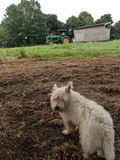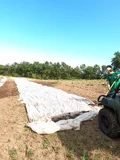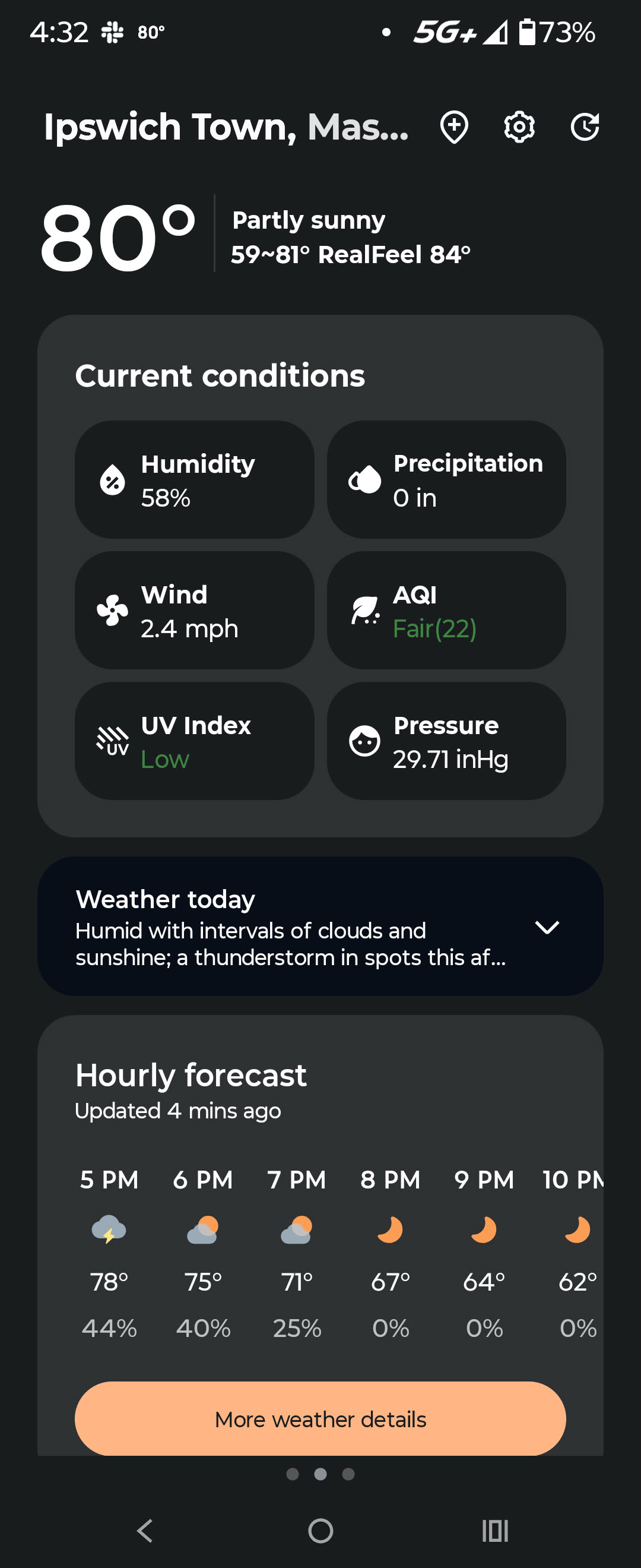TL;DR
Today we moved the chicken coops, harvested tomatoes, and applied row cover. There was a power outage and some of our work had to be delayed, but with a small crew maybe the timing was best that way.
Also, the new baby chicks are doing wonderfully.
A Brief History of This Chicken Setup
Marshview Farm uses mobile chicken coops as a way to fertilize areas of land in a rotating manner. I’ve written about the requirements for doing this on a veg-producing farm previously, but in short we follow them with extra buffer time. As a result, we also get eggs that can be sold to CSA members and market customers.
The chicken coop setup has been evolving over time. The mobile versions are inspired by regenerative farmer Joel Salatin of Polyface Farm. While he did not invent the concept of a mobile coop, his innovative use of these portable structures to move chickens across pastures has made them a central feature of regenerative farming.
Jamie has made some modifications to the concept to better suit this farm’s needs. For one, they’re on cow trailers with hitches that easily connect to the tractor. Also, there are some regional-specific changes, namely the netting over the ‘yard’ we create with the fences. This was added about a year ago to prevent hawks from getting to the chickens, a local (but not necessarily unique) issue.
Moving the Coops Weekly
About every week now, we move these three coops to a new location to give the chickens fresh ground which keeps the soil healthy and also helps prevent disease. Last week, we were done with moving them from area to area in the lower field to prepare for row extension later on, and the rest of the main field is being used for active veg production so we can’t put them there. Thus, we moved them onto the lowest part of the hill going up to the barn, where the pitch is anywhere from flat to around 10 degrees.
Last week, they were set up under these huge trees which provided them and us some shade, but this week we couldn’t find the last coop onto a pitch that wasn’t dangerous so we had to use the lowest part of the field instead. Once they’re settled, we let them roam around their new yard.
Time-spend and Process Snags
For a short move, on average it takes two of us about 2 hours to tear-down the yard, move the coops, and set things back up again. If things are missing, misplaced, or there’s an unforeseen snag like today’s hill pitch being just slightly too steep for the last one, it can take longer. There’s also one tire that is on it’s way out, so we had to get a mobile air compressor involved. Fortunately, it was already charged because the added complication of a power outage would have prevented any additional recharges and thus delayed work further.
To make things efficient, a simple checklist before moving can help. This might include:
- Having two people (a must)
- Having both a general and a specific sense of where the coops will be relocated
- Making sure that we have a working hitch pin
- Gathering any additional equipment needed (such as a mobile air compressor)
- Identifying a spot to put all the fences and poles and yard items
- Having more tire wedges than you usually need at the ready
All in all, moving the coops is a time-consuming process, but with a checklist and two people, it can be done efficiently.
The rest of the day was pretty much a breeze compared to this. We harvested tomatoes and then shoveled in some row cover over the top fields. It was unexpectedly warm and buggy due to not being overcast like it was predicted to be and no wind. But the Abigail variety in my dehydrator tonight makes up for a few mosquito bites here and there.
Homelab Work This Weekend
Last weekend, rather than trying to incorporate my Karakeep links into these posts, I decided to start in on containerizing all the automated process stuff I’ve been working on recently. This is specifically to force me to go through the steps of transferring most of the process off my laptop and into something that can always be running in the background, waiting for things to suggest that I do based on the state of inputs such as audio notes and images.
I also switched from using an old Samsung Galaxy s9 to a GoPro 8 I had lying around. The GoPro 8 is simply more durable than the old phone and better quality overall. As usual though, my summarization process hasn’t changed in a while, so it still produces the following summary.
AI Summary from Field Notes
Main Themes
- Farm Operations and Adaptability – Managing daily tasks, weather challenges, and technological tools.
- Sustainability Practices – Utilizing resources efficiently, repurposing materials, and minimizing waste.
- Innovation in Agriculture – Experimenting with new techniques (e.g., row cover installation, dehydrator use) and technology (e.g., GoPro for documentation).
Key Activities
- Livestock Management – Monitoring and maintaining animal health and infrastructure.
- Harvesting and Preservation – Collecting produce and using methods like dehydration or preservation.
- Technology Integration – Using tools like GoPro for documentation and analyzing data for efficiency.
- Emergency Preparedness – Adapting to power outages and other disruptions.
New Discoveries
- Manual Workarounds – Repurposing tools or methods when technology fails (e.g., manual egg washing).
- Row Cover Techniques – Effective methods for protecting crops or managing growth.
- Dehydrator Applications – Creative uses for preserving produce, suchity tomato leather or gum.
Research Questions
- How to optimize dehydrator settings for product quality?
- What are the most effective row cover strategies for different conditions?
- How can backup systems be improved for power outages?
- What pest control methods are most sustainable?
- How do seasonal changes impact farming practices?
Suggested Actions
- Improve Documentation – Systematically record processes for reproducibility and training.
- Test New Methods – Experiment with row covers, dehydration techniques, or manual alternatives.
- Share Knowledge – Disseminate successful practices (e.g., dehydrator recipes, row cover tips).
- Scale Innovations – Explore ways to expand sustainable or efficient methods across farms.
- Invest in Backup Systems – Develop or adopt reliable solutions for power outages and other disruptions.
Part 1
Main Themes:
- Creative Use of Excess Produce: The intern explores innovative ways to utilize surplus crops, such as tomatoes, beyond traditional farming purposes.
- Gastronomic Experimentation: The focus on crafting unique beverages (e.g., gin and basil drink) highlights the intersection of farming and culinary creativity.
- Sustainability and Resourcefulness: The farm’s ability to store and repurpose produce throughout the year underscores a sustainable, resource-efficient approach to agriculture.
Activities Performed by the Intern:
- Making Tomato Leather/Gum: The intern describes a process of dehydrating tomatoes to create a concentrated, flavorful product.
- Creating a Gin and Basil Drink: The intern experimented with combining dried tomatoes, gin, and basil in a glass to create a concentrated, flavorful drink.
- Documenting Culinary Uses: The intern recorded observations about flavor development over time and the aesthetic appeal of the tomato leather.
New Things Not Yet Encountered (by the Intern):
- Tomato Leather as a Culinary Product: The intern discovered a novel use for dried tomatoes beyond preservation or cooking.
- Flavor Development in Alcoholic Mixtures: The intern noted how flavors in the gin and basil drink evolved over time, suggesting a potential area for further exploration.
- Aesthetic Value of Dehydrated Produce: The intern emphasized the “stained glass” appearance of dehydrated tomatoes, highlighting an unexpected visual aspect of the process.
Questions and Future Areas of Research:
- Optimal Dehydration Methods: How does the dehydration process affect the texture, flavor, and shelf life of tomato leather?
- Flavor Pairing Studies: What other combinations (e.g., different herbs, spirits, or base ingredients) could enhance the drink’s flavor profile?
- Storage and Preservation Techniques: How can tomato leather be stored or preserved to maintain its quality over time?
- Seasonal Variability: Are there specific seasons or crop types where this method is most effective?
Suggested Actions:
- Document the Process: Record detailed steps for making tomato leather and the gin-based drink, including ingredient ratios and timeframes.
- Test Variations: Experiment with different types of gin, basil varieties, or additional herbs to refine the drink’s flavor.
- Share Recipes: Share the method with the farm community or local food enthusiasts to encourage further creative uses of surplus produce.
- Explore Scaling: Investigate how to scale the process for larger quantities while maintaining quality.
Part 2
Main Themes
- Daily Farm Operations: Tasks such as monitoring livestock, harvesting crops, and maintaining farm equipment.
- Power Outage Impact: Challenges posed by a sudden power outage affecting egg washing and farm operations.
- Row Cover Installation: Techniques for securing row cover to prevent pests like flea beetles.
- Sustainable Practices: Use of a dehydrator for preserving farm produce.
Activities Performed by the Intern
- Monitoring Livestock: Checked on baby chicks and ensured the heat lamp was operational.
- Egg Washing: Hand-washed and rinsed eggs due to a power outage, avoiding the use of electric-powered buckets.
- Harvesting: Completed tomato harvesting and prepared for row cover installation.
- Row Cover Installation: Laid out row cover for tatsu yoi, carrots, and turnips, then dug it into the soil to secure it.
- Barn Maintenance: Closed the barn after lunch.
- Dehydrating Produce: Used a new dehydrator to process farm produce for personal use.
New Things Not Yet Encountered
- Row Cover Installation: Learning to dig row cover into the soil for effective pest prevention.
- Manual Egg Washing: Alternatives to automated egg washing systems during a power outage.
- Dehydrator Use: Incorporating a new tool for preserving farm produce.
- Power Outage Response: Adapting farm operations during unexpected electrical failures.
Questions and Future Research Areas
- Power Outage Mitigation: How to maintain egg washing and other electric-dependent tasks during future outages.
- Row Cover Effectiveness: Long-term benefits of digging row cover into the soil versus using staples/spikes.
- Dehydrator Efficiency: Optimal use of the dehydrator for different types of farm produce.
- Pest Control Strategies: Alternative methods to prevent flea beetles without row cover.
- Weather-Dependent Row Cover: Best practices for installing row cover in varying weather conditions.
Suggested Actions
- Backup Systems: Explore solar-powered or manual alternatives for egg washing and other electric-dependent tasks.
- Row Cover Training: Document and share techniques for securing row cover to prevent pests.
- Dehydrator Expansion: Use the dehydrator more systematically for preserving farm produce.
- Power Outage Preparedness: Develop a plan for maintaining farm operations during electrical failures.
- Pest Control Research: Investigate alternative pest prevention methods for crops.
Part 3
Main Themes:
- Farm Work Routine: Daily tasks such as moving chicken coops, tomato harvesting, and market outreach.
- Weather and Environmental Challenges: Hot weather affecting work, and challenges in navigating terrain for coops.
- Technology Use: Transitioning from a broken phone to a GoPro for recording field notes and videos.
- Logistical Hurdles: Difficulty in relocating coops due to terrain and tree placement.
Activities Performed by the Intern:
- Moved Chicken Coops:
- Attempted to relocate three coops under large trees for shade.
- Faced challenges due to a slight incline and terrain, leading to multiple attempts.
- Coops were eventually moved to a new location, though the process took longer than usual.
- Tomato Harvesting:
- Picked tomatoes with a team of four, collecting 6–7 trays (with limited trays available).
- Checked for market opportunities to sell tomatoes at a discounted bulk rate.
- Lunch Break:
- Took a lunch break during the day.
- Technology Use:
- Used a GoPro Hero Black for recording field notes and videos (due to a broken phone).
- Tested the GoPro’s features, including remote camera control via a mobile app.
New Things Not Yet Encountered:
- GoPro Features:
- Remote camera control via a phone app.
- Advanced recording capabilities for field documentation.
- Coop Placement Challenges:
- Navigating coops on a hillside with large trees for shade.
- Terrain-related issues (e.g., coops rolling, difficulty positioning).
Questions and Future Research Areas:
- Coop Placement:
- How to optimize coop placement on sloped terrain to prevent rolling?
- Are there alternative methods to secure coops in challenging locations?
- GoPro Utility:
- How to effectively use the GoPro for long-term field documentation?
- Are there limitations in the GoPro’s features for agricultural use?
- Market Demand:
- How to balance surplus tomato production with market demand?
- Are there alternative markets or pricing strategies for excess crops?
Suggestions for Action:
- Improve Coop Navigation:
- Develop a plan to secure coops on sloped terrain (e.g., using weight distribution or additional anchors).
- Explore alternative locations for coops that avoid inclines and tree constraints.
- Enhance GoPro Usage:
- Create a checklist for using the GoPro for field notes, including battery management and storage.
- Test the GoPro’s durability in outdoor conditions.
- Market Outreach:
- Expand market outreach efforts to find bulk buyers for surplus tomatoes.
- Document tomato quality and freshness for marketing purposes.
[end of post]
Enjoy Reading This Article?
Here are some more articles you might like to read next:









